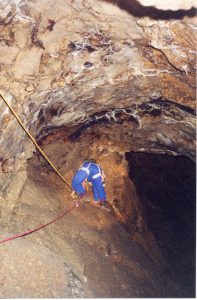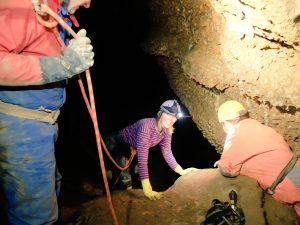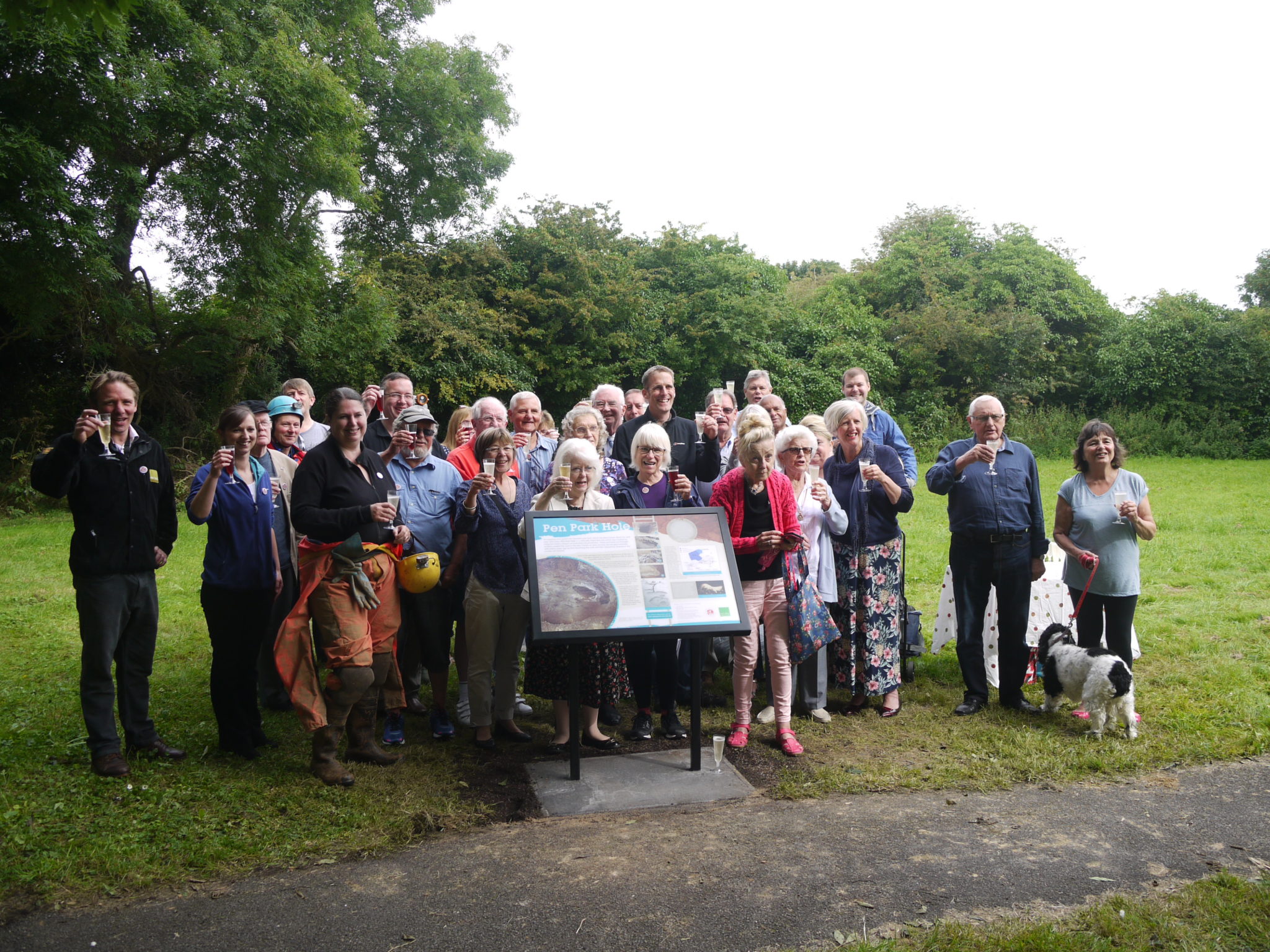Pen Park Hole, a spectacular hydrothermal cave beneath north Bristol, has now been designated as a Site of Special Scientific Interest (SSSI) by Natural England.

The cave has a long and interesting history. It was first been descended in July 1669 by Captain Samuel Sturmy, a local mariner, accompanied by a miner. It was eventually sealed by its owner in 1879 and remained that way until rediscovered and reopened in January 1957. This enabled a more modern survey to be carried out at the request of the City Council as a nearby housing estate was getting closer to the site of the cave. It was sealed again in 1963, following an incident involving some local teenagers. 30 years later, the Council intended to landscape the area around the entrance as a park. Thanks to their generous co-operation, plus the support of local residents, access to the cave was regained, and an agreement was entered into by the council and three local caving clubs, the University of Bristol Speleaological Society, the Bristol Exploration Club and the Wessex Cave Club to allow access to the cave under a leader system administered by the clubs.
The cave consists of a series of sub-horizontal passages which extend east and west from the remarkably large Main Chamber. This Chamber extends over a vertical range of some sixty metres and is over thirty metres in width. Much of the cave is lined with a spectacular display of hydrothermal dog-tooth calcite crystals.
In 2012, it appeared possible that a new housing development might be built on the site of the former Wayfarer pub, immediately adjacent to the cave. The first planning application showed houses very close to the site of the enormous main chamber in the cave and this stirred up a lot of adverse feeling locally. Although these applications were subsequently dropped, a campaign against the proposed development was organised and important assistance gained from both local MP, Charlotte Leslie and local Councillor, Brenda Massey.

It was at this stage that I approached Natural England as it was clear that rather more ‘clout’ was required in the way of legal protection for the cave. NE have been hugely supportive and have been closely involved in discussions with the current developers of that site and have agreed a method of working which it is hoped will safeguard the cave both during and after construction work. NE started the process of formally notifying the site about three years ago and, although this was a long process, only now being completed, the fact that it was happening obliged both planning authorities and developers to consult with them as plans progressed and this proved to be a hugely important safeguard.
Now, the notification process is now complete and this morning, 5th August, Councillor Brenda Massey unveiled a Natural England interpretation board on site, with local residents and the press in attendance.Councillor Massey said: “I am really pleased about the designation, and wish to offer my congratulations on all the hard work that has been put in by everyone to protect the site.”
Unfortunately Charlotte Leslie MP, who went down the cave three years ago to see for herself why local residents and cavers were so concerned about the development proposals, was unable to be there due to illness, we wish her a speedy recovery.
Pen Park Hole is a fascinating cave. As well as its historical interest, the cave is also unusual from a geomorphological point of view. Unlike most caves, which are formed by rainwater falling from above, this cave has been formed by hot, hydrothermal, water rising from deep underground. In this respect the cave can be regarded as a fossilized version of the famous Bath Hot Springs. although it is much older. Pen Park Hole is believed to have been formed in late Triassic, some 200 million years ago. It lost its connection with this water supply a long time ago. There is now a lake at the bottom of the Main Chamber, but this is connected to local drainage. Its depth varies over time, but so slowly that no link has yet been established with local weather or water conditions. In the 18th century it was thought the cave might have been connected to the Severn Estuary and was thought to be tidal, but that is not the case.

Matthew Heard, Natural England’s area manager for the Somerset, Avon & Wiltshire team said: “Pen Park Hole is incredibly unique – both for its geology and history. There’s a whole underground network right in the middle of the city, but not many people know that Bristol’s very own national treasure is right under their feet. “Sites of Special Scientific Interest are some of our most spectacular and beautiful habitats, and we want to make sure this 200 million year-old cave is protected for generations to come.”
Not only has the site been scheduled for its geological interest, but also for its biology. It’s also home to the only known example of a cave invertebrate community including a substantial cave-dwelling population of the crustacean Niphargus kochianus, a species that’s usually found in seeps and springs, not in large underground lakes.
More detail about the cave, its history and its geology can be found on its dedicated website www.penparkhole.org.uk.
Each of the three clubs who are part of the access agreement have leaders who are familiar with the cave and full access details can be found on the website.

To hear the BBC Radio Bristol underground interview: click the link below and push time bar to 1hr 24min 30 sec.
http://www.bbc.co.uk/programmes/p0417rq1
Correspondent: Graham Mullan
